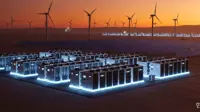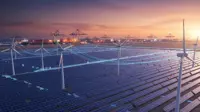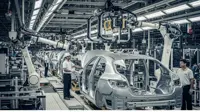India could phase out coal by 2050: report
14 Feb 2017
India could do away with coal-fired power plants by 2050 if the cost of both renewables and battery storage keep falling at their current trajectories. The cost of solar power generation has already fallen below that of coal-fired power and if the current trend continues, the generation cost of renewable power could come down to half their current price by 2025.
A paper by The Energy and Resources Institute (Teri) estimates that in less than a decade renewables and battery storage could undercut coal, reducing the country's carbon dioxide emissions by around 10 per cent after 2030.
According to Teri's research director-general Ajay Mathur, while coal-fired power plants under construction will be built, no more will be needed after 2025, provided two things happen.
TERI suggests that the country can cut its CO2 emissions by up to 10 per cent or 600 million tonnes after 2030, should renewable energy and batteries become less costly than coal within a decade, says the Financial Times report.
''And if ministers deploy the right policies to drive the development of a renewables-led grid, the country could phase out coal by 2050. "This is perfectly achievable if government gets its policies right," TERI director-general Ajay Mathur told the FT. "India's power sector could be coal-free by 2050."
India with a population of over 1.2 billion people is currently the world's fastest-growing polluter, as emissions grow in tandem with its burgeoning economy (See: India pollution now worse than China, kills 1.1 mn a year). India's carbon emissions volume grew by over 8 per cent in 2014 and 5 per cent in 2015 respectively, according to the FT.
Solar power has become the world's cheapest form of energy for electricity generation, and the cost of solar power is falling further.
The cost of solar energy has plunged to a third of what it was in 2010 in more than 50 emerging economies, including India and China.
India is one of the world's largest greenhouse gas emitters, but under the Paris Agreement it has committed to sourcing at least 40 per cent of its electricity from non-fossil fuel sources by 2030, including the deployment of 175GW of renewable energy capacity by 2022.

















